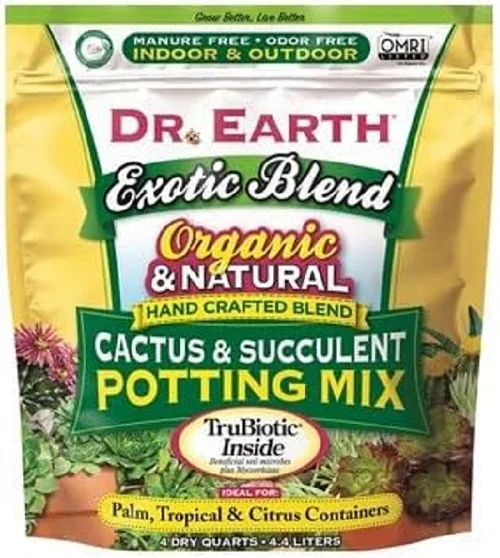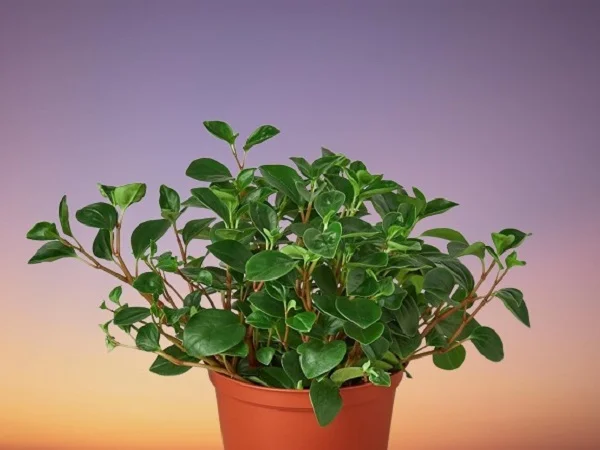Ruby Glow Peperomia (Peperomia graveolens) Indoor Care, Propagation, Problems with Remedies
Some links in this post may be affiliate links
Ruby Glow Peperomia (Peperomia graveolens) grows best in medium to bright indirect light, warm and humid conditions, and moderately moist, rich, well-drained soils coupled with monthly feeding in the growing season.
Peperomia graveolens also called Ruby Peperomia is among the popular Peperomia varieties and bears gleaming red stems in wine-red color and succulent leaves with a wine-red shade.
The upper part of the leaf has a transparent v-shaped ‘window’ which allows light to pass through to the photosynthetic tissues where photosynthesis takes place; photosynthesis is the process through which plants make food needed for energy and growth.
On account of its spectacular foliage and ease of care, Ruby Peperomia is one of the best plants for the living room where it can create a great first impression.

Botanical name: Peperomia graveolens
Family: Piperaceae
Common names: Ruby Glow Peperomia, Ruby Peperomia
Origin
Peperomia graveolens is a rare Peperomia that is endemic to Ecuador.
Flowers
The flowers in Ruby Peperomia are borne on the long stems but are rather tiny. They are in the shade of yellowish-white and they have a faint unpleasant odor if you get your nose close enough. The name 'graveolens' means 'bad smelling' because of the flowers scent which is like the smell of mice urine.
Is Ruby Glow Peperomia toxic?
Peperomia graveolens like other Peperomia Plants is non-toxic to humans and pets. They are some of the pet-safe plants ideal for growing indoors.
Where to Buy
If you would like to acquire Ruby Peperomia for your collection, you may obtain them online from Etsy (Link to Etsy).
Peperomia graveolens Care Indoors
Ruby Glow Peperomia (Peperomia graveolens) prefers medium to bright indirect light away from direct sunlight, average warmth of 15-240C, humidity of 50-55% and moderately moist, fertile, well-drained, succulents potting mix coupled with monthly feeding during the growing season.
Ruby Peperomia requires regular pruning to keep it neat, to encourage a bushy compact growth and minimize pest and disease infestations. Repotting is only needed when the plant becomes extremely pot-bound as it grows best when the roots are confined. Keep reading for more on these growing conditions and how to achieve them.

Watering
Water Ruby Glow Peperomia liberally during the growing season and allow the top 2-3 inches of soil to dry out between waterings to keep the soil moderately moist.
Significantly decrease watering during the cold season to keep the soil barely moist as growth is minimal at this time.
Ensure the pot has a drainage hole to prevent the soil from getting soggy as it can lead to root-rot and death of the plant. Learn more on how to water indoor plants correctly.
Light Requirements
Ruby Glow Peperomia grows best in medium to bright indirect light (filtered light). Keep it away from direct sunshine as it can result in scorching of the leaves.
Too little light will result in a leggy plant and loss of leaf color. If the natural lighting is not adequate, you may use grow lights to supplement it. Take a look at these full spectrum grow lights on Amazon.
Regularly turn the pot to make sure that the plant receives light on all sides for uniform growth and also prevent leggy growth.
Temperature and Humidity
Average warmth of 15-240C is ideal for Ruby Glow Peperomia. A room temperature that is comfortable for you is ideal for this plant. If the temperatures are outside this range, they impact the growth of the plant negatively. Protect the plant from cold drafts as they can cause reduced growth and leaf loss.
Ruby Glow Peperomia has no need for high humidity. It does well in average room humidity of 50-55%. Occasionally clean the leaves by damp-wiping with a soft cloth to get rid of dust and also discourage pest and disease infestations. Make sure that there is good air circulation to reduce fungal diseases.
Fertilizer
Feed Ruby Glow Peperomia with a balanced, liquid fertilizer once a month during the growing period for lush growth. To prevent fertilizer burn and eventual death of the plant, do not feed it in the cold season as growth is minimal at this time.
Potting Mix
The best potting mix for Ruby Glow Peperomia should be rich in organic matter, loose and free-draining to avoid getting soggy soil. The soil should be loose enough to allow water to drain out fast enough.
Ruby Peperomia is prone to root-rot if the soil gets soggy (retains too much water), therefore, cactus and succulents mix is ideal for this plant as it drains easily.
Repotting
Repot Ruby Glow Peperomia during the growing season only when the plant has become extremely pot-bound as it grows best when the roots are confined.
Use a pot one size larger than the current one and ascertain that the pot has a drainage hole to prevent the soil from getting soggy as it can lead to rotting.
A terracotta is preferable for this plant as it is porous and allows water to drain faster preventing the soil from holding too much water. Take a look at these terracotta pots with saucer on Amazon.
Pruning
Pruning Ruby Glow Peperomia involves regular removal of dead foliage to maintain the plant neat as well as minimize pest and disease infestations.
To encourage a bushy, compact growth of the plant, regularly pinch off the growing tips. Ruby Peperomia becomes straggly as it ages, therefore, cutback the stems during the growing season to rejuvenate growth.
Propagation
Ruby Glow Peperomia (Peperomia graveolens) propagation can be done from seeds, leaf and stem-tip cuttings or by plant division.
How to propagate Ruby Glow Peperomia from seeds
Sow the Ruby Glow Peperomia seeds at the beginning of the growing season in moist, well-drained soil.
Place the set up in a warm, well-lit place away from direct sunlight and maintain the soil moist until the seeds germinate.
Once germinated, maintain the soil moist until the new Ruby Glow Peperomia plants are well established after which you can begin routine care.
1. How to propagate Ruby Glow Peperomia from leaf cuttings in water
Take leaf cuttings from a healthy Ruby Peperomia and ensure each leaf cutting has a petiole. The leaf cuttings root easily, therefore there is no need for a rooting hormone.
Allow some time for the formation of a protective callus tissue over the cuts of the leaf cuttings to prevent rotting.
Place the leaf cuttings in a jar of clean plain water or in a propagation station and change the water every 5-7 days.
Position the set up in a warm, well-lit place until growth begins at the base of the cuttings leaf petiole. Allow enough time for substantial growth of the roots and new leaves.
Transfer the rooted cuttings to individual pots and place in a warm, well-lit place away from direct sunlight.
For a fuller plant, transfer several plants into one pot.
Maintain the soil moist until the new Ruby Glow Peperomia are well established after which you can begin routine care.
2. How to propagate Ruby Glow Peperomia from stem-tip cuttings
Take stem cuttings of about 4-5 inches length from a healthy Ruby Peperomia and ensure each cutting has at least 2 sets of leaves. The stem-tip cuttings root easily, therefore, there is no need for a rooting hormone.
Allow sometime for the formation of a protective callus tissue over the cuts of the cuttings to prevent rotting.
Insert the cuttings in moist rooting soil and place in warm well-lit place away from direct sunlight.
Maintain the soil moist until new growth emerges and substantial growth has been observed.
Transfer the rooted stem cuttings to individual pots and begin routine care. For a fuller plant, transfer several cuttings into one pot.
3. How to propagate Ruby Glow Peperomia by plant division
Water the Ruby Glow Peperomia thoroughly at least 1 day before to make it easier to divide and also hasten establishment. A well hydrated plant suffers less shock and takes a shorter time to take root.
Take out the plant from its pot and divide it into several sections and ensure each section has adequate roots.
Pot these sections in individual pots and place in a warm, well-lit place away from direct sunlight.
Maintain the soil moist until new growth emerges on the sections.
Allow the new Ruby Glow Peperomia to be well established before transplanting after which you can begin routine care.
Related: How to Propagate Radiator Plants (4 Easy Methods of Peperomia Propagation)

Peperomia graveolens Problems and Solutions
Ruby Glow Peperomia (Peperomia graveolens) problems include dropping leaves, drooping leaves, brown leaf tips and edges, shrivelled leaves, leggy growth, pests and diseases among others. Keep reading for more on these problems and how to fix them.
Wilted and discolored leaves and corky swellings under the leaves
Wilted and discolored leaves and corky swellings under the leaves in Ruby Glow Peperomia are due to soggy soil. This is an indication of root-rot. Isolate the affected plant and treat it appropriately for the disease. Learn how to treat root-rot in houseplants.
Diseases
Ruby Glow Peperomia is prone to leaf spot disease. Isolate the affected plant and treat it for the leaf spot disease.
Pests
Ruby Glow Peperomia is prone to pests like spider mites, whiteflies, scale insects and mealybugs. Isolate the affected plant to prevent spread to other plants and treat it for the pests. Learn how to identify and control pests in indoor plants.
Dropping leaves
There are many and varied causes of dropping leaves in Ruby Glow Peperomia. One possible cause of dropping leaves is too low temperature. Move the plant to a warmer spot away from cold drafts and maintain an average warmth of 15-240C.
The second possible cause of dropping leaves in Ruby Glow Peperomia is underwatering causing the foliage to wilt and drop. Water the plant liberally during the growing season and allow the soil to dry out slightly between waterings. Reduce watering in the cold season to keep the soil slightly moist but never allow the soil to dry out completely to avoid leaf drop.
Related: 12 reasons why Peperomia is dropping leaves with solutions
Drooping leaves
Ruby Glow Peperomia leaves may droop due to cultural faults like exposure to direct sunlight, underwatering, overwatering, extreme temperature, pests and diseases among others.
Check out these 14 reasons for Peperomia is drooping leaves and how to fix them
Leggy stems (growth)
Leggy stems in Ruby Glow Peperomia are due to low light as it grows best in bright light to light shade. Cutback the stems to rejuvenate growth and move the plant to a brighter spot where it will receive medium to bright indirect light or instal grow lights if the natural light is not enough. Check out this guide on understanding light for houseplants.
Brown leaf tips and edges
Brown leaf tips and edges in Ruby Glow Peperomia are due to sudden drop in temperature from cold drafts. Remove all the damaged leaves and keep the plant away from cold drafts to maintain an average warmth of 15-240C. Check out this guide on understanding temperature for houseplants.
Dry and shrivelled leaves
Dry and shrivelled leaves in Ruby Glow Peperomia are caused by excess soluble salts in the soil from the water or excess feeding. Occasionally flush out the salts from the soil by running a stream of water through the soil until it comes out through the drainage holes and repeat the process several times.
You liked it? Share on social media.
Related Content
Amazon Associates Disclosure
Homeplantsguide.com is a participant in the Amazon Services LLC Associates Program, an affiliate advertising program designed to provide a means for sites to earn advertising fees by advertising and linking to amazon.com.





